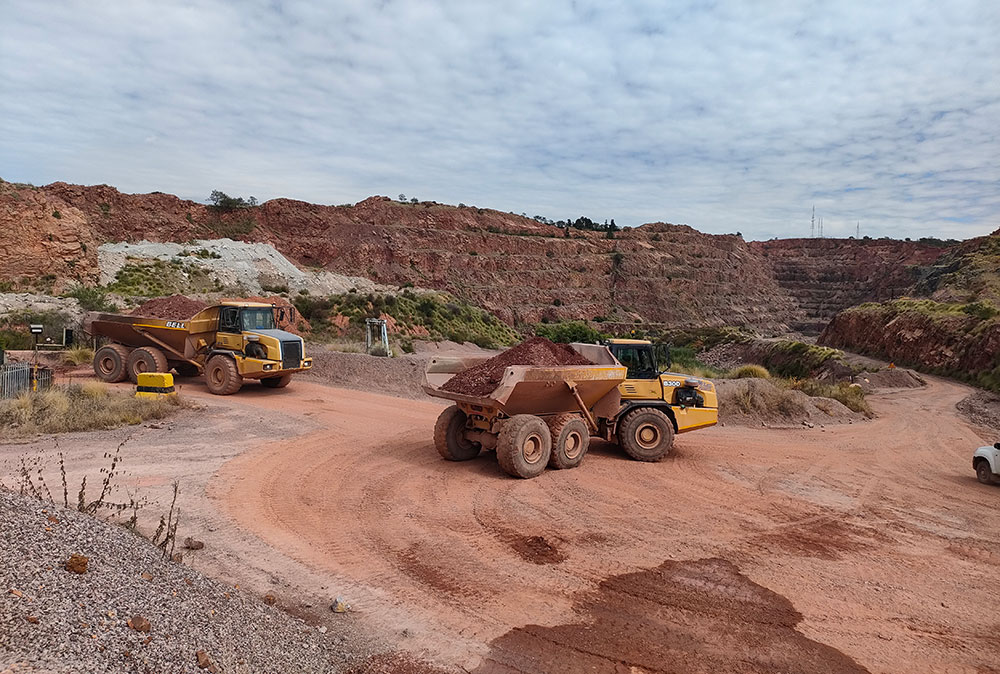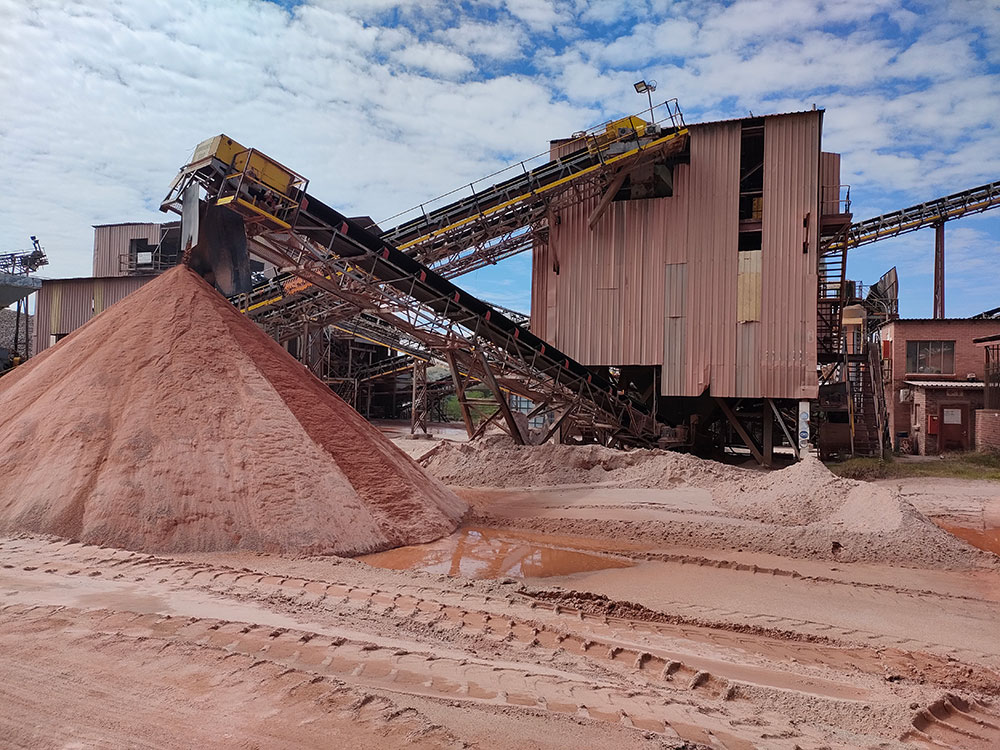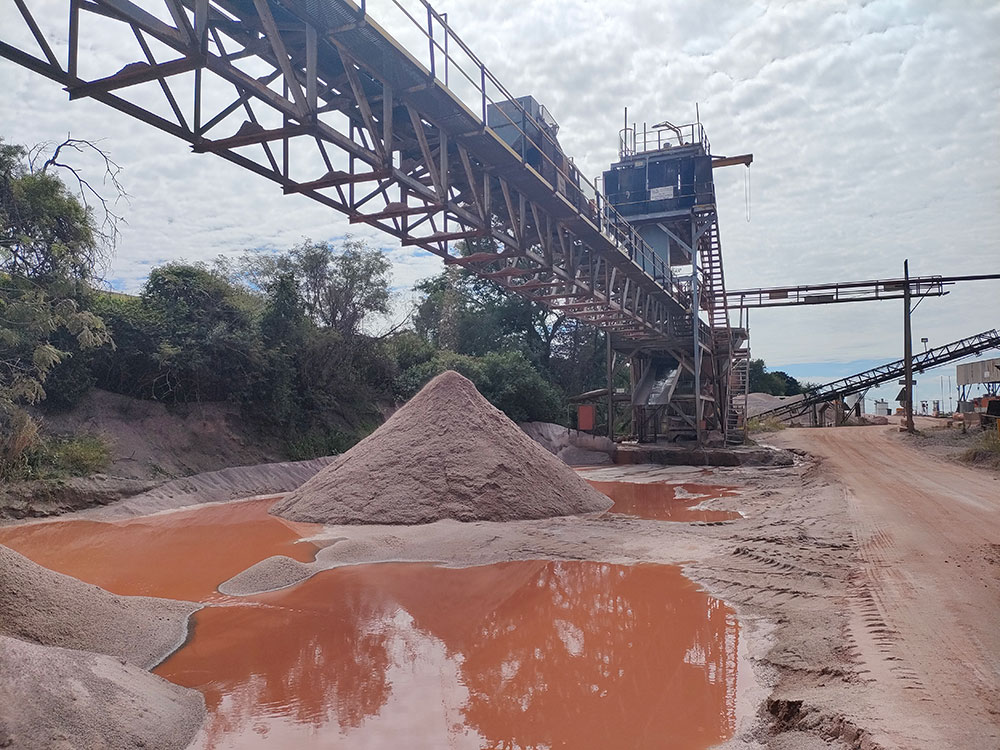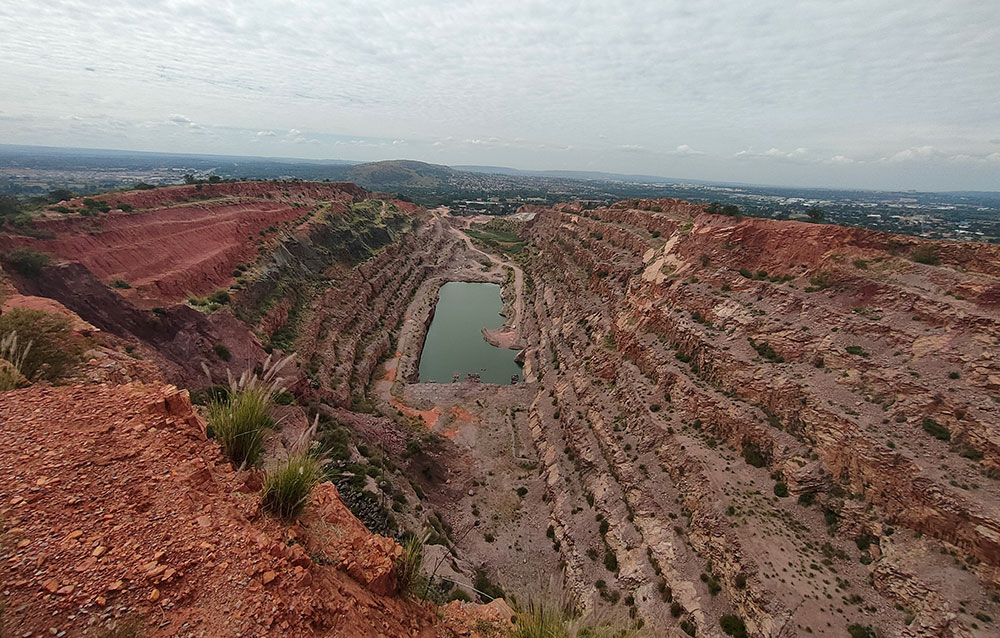To run profitable operations in the face of a challenging business environment – influenced by a steady decline in the demand for construction materials and exacerbated by the Covid-19 pandemic – AfriSam has implemented a new working model for its aggregates business. In line with the new approach, Tshwane-based Ferro Quarry has adopted a demand-driven operating model, where production is based on actual customer orders rather than market projections. Several initiatives have been put in place to accommodate the new working model. Munesu Shoko was recently on site and filed this report.
Due to the lack of meaningful construction projects in the country, the South African aggregates industry has experienced a protracted downturn in recent years. The outbreak of the Covid-19 (Covid) pandemic and the subsequent hard lockdown in 2020 pretty much served as the final straw, explains Zielas du Preez, regional manager Gauteng and Cape Operations at AfriSam.
To survive and operate profitably during such a low-volume cycle, AfriSam had to adapt its aggregates operations in line with the new market dynamics. In 2020, the company put some of its operations in the Gauteng and KwaZulu-Natal province under care and maintenance, including Tshwane-based Ferro Quarry. Operations at Ferro stopped on 31 December 2020 following the conclusion of a Section 189 process.
For the majority of 2021, the operation was under care and maintenance (C&M). Despite the stoppage of operations, Moses Nkuna, works manager at AfriSam Ferro Quarry, says regular checks throughout the C&M period ensured that the plant remained in a safe working condition.
Priority was also given to the management of all statutory environmental aspects such as dust fallout monitoring and water sampling, among others. However, the readymix plant was kept operational throughout this period.

Improved demand
Late last year, the business environment started improving, largely driven by several construction projects in the area, as well as some planned asphalt projects in the Tshwane area. One such project, which prompted the reopening of Ferro Quarry, is the Tshwane Automotive Special Economic Zone (TASEZ).
Launched in 2019, it is one of the ten approved Special Economic Zones spread across seven provinces of South Africa. The TASEZ is a shared vision of national, provincial and local government represented by the Department of Trade, Industry and Competition, Gauteng Department of Economic Development, the City of Tshwane and the automotive industry, to transform Tshwane into a leading automotive investment destination.
Between July and September 2021, a small team was remobilised back on site for a washed sand trial project. The specialised product, which could only be produced to client specification by AfriSam’s Ferro operation, was supplied to AfriSam’s readymix plant for a specific concrete mix design for the TASEZ project.
“We mobilised resources from our nearby operations where we had additional people and machines. The washed sand trial run met the client’s exact requirements, and we subsequently stockpiled enough material to sustain the readymix plant until the end of November 2021. The trial run also served as a pilot for our demand-driven operating model, which we believe is the modus operandi for running a sustainable quarrying operation,” explains Du Preez.
AfriSam Ferro Quarry has thus far supplied large volumes of material to the TASEZ project. In the beginning, it was basically more subbase material for groundwork and supporting infrastructure. However, last year demand was more readymix concrete-driven, with a large part of the latter stages absorbing the specialised washed sand produced at Ferro, allowing AfriSam to retain more revenue internally.

Demand-driven production
At the start of this year, the AfriSam sales team returned with a proposed offtake model for 2022 after in-depth engagements with clients in the vicinity of the quarry. Given that these were project-specific volumes, which were still far lower than the pre-Covid levels, Du Preez says AfriSam had to find a sustainable way of running the plant.
Quarries, he adds, no longer have the luxury of just producing and putting material on the floor. As a result, the company adopted a demand-driven model, where it produces according to customer orders. This approach enables a synchronised, closed loop between customer orders, production scheduling and execution.
“A key component of the demand-driven model is regular communication between clients, salespeople, the production team and the community at large,” says Du Preez. “We work closely with our clients. We require their exact forecast for the month ahead and we plan our production accordingly. Internally, we have our weekly meetings between the salespeople and the operations team at the quarry to review the past week and discuss the plan for the week ahead. Any required changes can be implemented accordingly so that the material produced is in full alignment with exact customer orders.”

Flexible operation
The processing plant has therefore been reconfigured to be able to process according to demand. The plant has been modified to make it more multi-functional. For example, with the traditional setup, the primary section of the plant could only produce material to the ISP and base course products. Changes have been made to allow production of a variety of material sizes from that small section of the plant, as opposed to running the whole plant from primary to tertiary to get to a specific size.
In addition, a feed bin has been utilised at the tertiary part of the plant to allow feeding and ultimately processing of material without having to run the primary and secondary sections of the plant first. As a result, the production team is using fewer resources or less capacity to get the same results as the old process.
“We have also paid particular attention to the screening part of the plant. Before closure, there was a high demand for ballast material, and therefore we had some extra openings on the bottom deck of one of the screen panels. When we came back, we realised that the extra openings were limiting the throughput for washed sand, which is one of the best-selling products currently. We have figured out that for us to produce washed sand effectively, we have to balance the open area between screen one and screen two. We therefore changed the openings accordingly. The ability to chop and change as and when required also allows us to improve throughput for the base course material,” explains Nkuna.
To service the demand-driven model, AfriSam has brought back on site about 40% of the previous staff complement. The compact team can multi-task across core functions such as production and maintenance.
For load and haul functions, the operation has always used a contractor model. “Traditionally, we would need four 30-t articulated dump trucks (ADTs) to run this operation, but under the demand-driven model we are running two 30-t ADTs, working in combination with a 38-t excavator. Hauling routes are kept in top condition to reduce cycle times. The two ADTs are shared between the pit and the processing plant sections, where they are deployed to move run-of-mine material from the pit to the processing plant and to stockpile material, respectively.
The load and haul contractor also forms part of the weekly meetings to ensure they are in sync with the production plans for the week ahead. “The contractor is well geared to support any urgent changes in line with customer orders. They understand that the demand-driven model requires greater agility. The same close cooperation is maintained between the quarry and the drill and blast contractor,” explains Du Preez.
Community relations
Forging resilient community relations, stresses Du Preez, is no longer a luxury for quarry operators and should form part of a business culture. Several initiatives have been introduced at Ferro Quarry to foster good relations with the community.
A comprehensive newsletter is shared with the community, detailing all production plans for the quarry. To monitor the impact of the quarry’s blasting activities to the community, AfriSam has installed blast vibration meters within some parts of the community to measure vibration separate from the systems used on the day of the blast. This is monitored by an independent contractor, and an independent report is produced and shared with the community, indicating the vibrations and airblast from every blast.
“Due to increased urbanisation, the communities have moved closer to the quarry over the years. Some distances are as close as 200 m from the active mining areas. Communication is therefore key in everything that we do. Before we recommenced operations, we informed them of our plans, the activities that we will have back on site and the number of blasts that we envisage for the year so that they know exactly what to expect from our operations,” says Du Preez.
Before each blast, community members receive three notifications – a week before, during the morning of the blast and 10 minutes before the blast. In those notifications, they are informed about parameters such as the size and direction of the blast, as well as the charge mass per delay. The quarry has previously given sessions to the community to help them understand how a blast works.
“The important thing here is communication. Lack of communication creates problems with communities. A quarry in their vicinity is generally an irritation and it’s important to keep them informed and help them understand what’s happening and how it will affect them,” adds Du Preez.
Ferro Quarry also employs electronic blasting which, in addition to improving fragmentation significantly, plays a significant role in adhering to local ground vibration and airblast limits. In fact, electronic blasting has been the standard across all AfriSam operations for years now.
“Since 2019, we have been working closely with Tony Rorke, who is well-known in the blasting circles in South Africa and brings a wealthy of experience in this field. Under his guidance, we have adopted a single line blasting model, with simulated vibration pulses outside the mining footprint, so as to forecast and eliminate any potential overlapping that can amplify ground vibration. Together with tight controls in limiting risks of any excessive air blasts, this has been key to our world-class blasting practices,” concludes Du Preez.
This article was first published in the March/April issue of Quarrying Africa.





